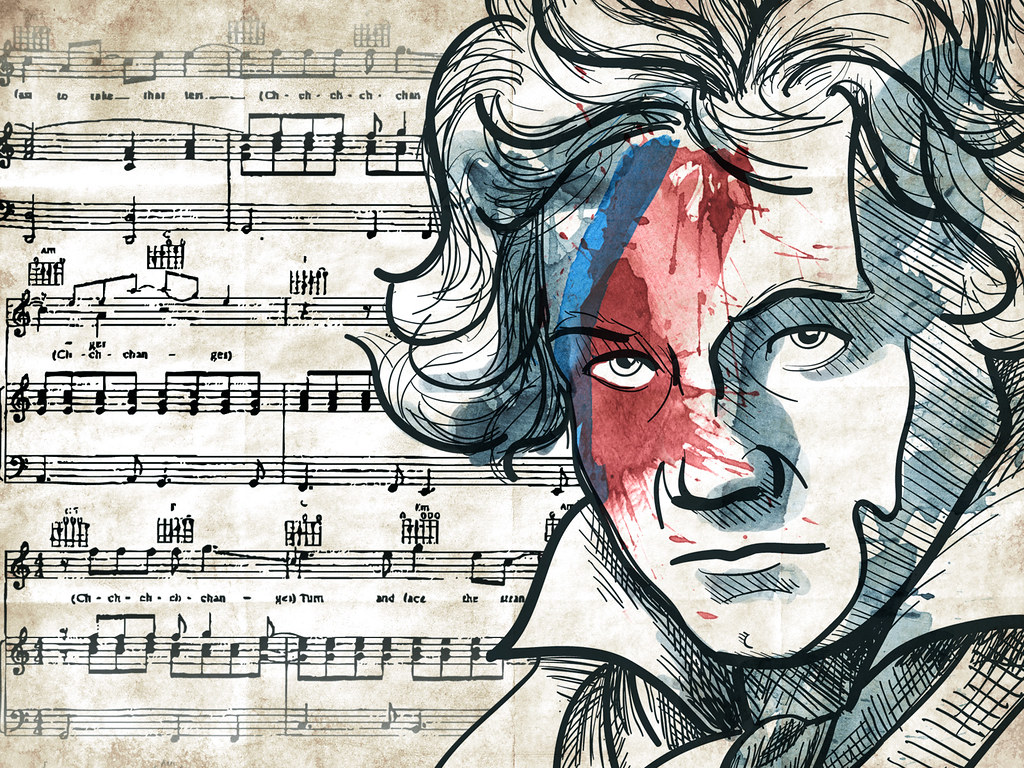Ludwig van Beethoven, one of the greatest composers in history, left an indelible mark on the world of classical music. His genius and emotional depth continue to resonate with audiences centuries later. From symphonies that stir the soul to intimate piano sonatas, Beethoven’s compositions are a testament to his enduring legacy. In this blog post, we will explore and celebrate the 10 best compositions by Ludwig van Beethoven, which have stood the test of time.
- Symphony No. 9 in D minor, Op. 125, “Choral”: The Ninth Symphony is Beethoven’s crowning achievement, renowned for its grandeur and its unforgettable choral finale, the “Ode to Joy.” This monumental work transcends boundaries and expresses the universal human longing for joy, unity, and brotherhood.
- Piano Sonata No. 14 in C-sharp minor, Op. 27, No. 2, “Moonlight Sonata”: With its hauntingly beautiful first movement, the “Moonlight Sonata” captivates listeners with its ethereal and introspective melodies. It showcases Beethoven’s ability to evoke deep emotions through his piano compositions.
- Symphony No. 5 in C minor, Op. 67: Possibly one of the most recognized classical compositions, the Fifth Symphony opens with its iconic four-note motif, creating an atmosphere of tension and drama. Beethoven’s inventive orchestration and powerful melodies make this symphony an exhilarating and transformative experience.
- Piano Concerto No. 5 in E-flat major, Op. 73, “Emperor”: The “Emperor” Concerto is a majestic masterpiece, combining virtuosity with profound musical expression. Beethoven’s final piano concerto displays his technical prowess and ability to weave together intricate melodies and harmonies.
- Symphony No. 6 in F major, Op. 68, “Pastoral”: In contrast to his more dramatic works, the “Pastoral” Symphony showcases Beethoven’s love for nature. Its serene and picturesque movements paint vivid soundscapes, evoking the tranquility and beauty of the countryside.
- Violin Concerto in D major, Op. 61: Beethoven’s Violin Concerto is a testament to the expressive capabilities of the instrument. With its lyrical melodies and virtuosic passages, this concerto stands as one of the most beloved and frequently performed in the violin repertoire.
- Symphony No. 7 in A major, Op. 92: The Seventh Symphony embodies exuberance and joy. From the electrifying rhythms of the second movement to the captivating finale, Beethoven’s mastery of composition is on full display, leaving listeners exhilarated.
- Piano Sonata No. 8 in C minor, Op. 13, “Pathétique”: The “Pathétique” Sonata showcases Beethoven’s ability to convey raw emotions through his music. Its passionate and stormy first movement, followed by contrasting lyrical sections, is a quintessential representation of Beethoven’s style.
- String Quartet No. 14 in C-sharp minor, Op. 131: Considered one of the greatest achievements in the string quartet genre, Op. 131 is a profoundly introspective and emotionally charged work. Its seven interconnected movements demonstrate Beethoven’s mastery of form and his ability to create a cohesive and deeply moving musical narrative.
- Symphony No. 3 in E-flat major, Op. 55, “Eroica”: The “Eroica” Symphony revolutionized symphonic writing with its scale, intensity, and thematic development. Beethoven’s exploration of heroism and human struggle in this symphony laid the foundation for a new era of classical music.
Conclusion:
Ludwig van Beethoven’s contributions to classical music are immeasurable, and these 10 compositions stand as a testament to his genius and artistic vision. From symphonies that provoke intense emotions to intimate solo works that touch the soul, Beethoven’s music continues to captivate and inspire audiences worldwide. Each composition on this list offers a unique glimpse into the depths of Beethoven’s creativity and his ability to transcend the boundaries of time and space, solidifying his place as one of the greatest composers of all time.


Comments are closed